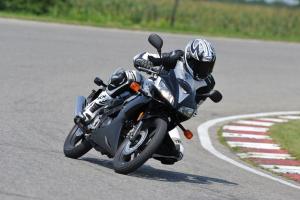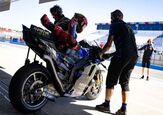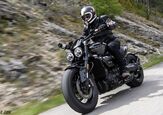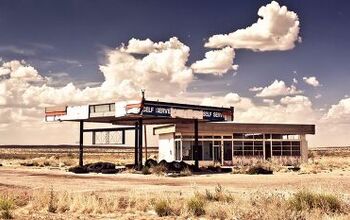2010 Honda CBR125R Review - Motorcycle.com
Honda makes a lot of motorcycle models, but not all of them can be seen in U.S. showrooms because of American Honda’s perception that they wouldn’t sell in large enough numbers to make it worthwhile. Meanwhile, Honda Canada is being more aggressive by importing models already created for world markets, such as the CB1000R naked sportbike and the CBF1000 sports standard we recently reviewed. This not-in-America theme continues with the CBR125R, a stylish and affordable entry-level sportbike you won’t find at Honda’s American dealers. –Ed.
An eighth of a liter isn’t that much. It’s about how much coffee you’ll get if you order a short cup of brew at Starbucks. If we’re talking streetbike engine displacement, that’s 125cc. But don’t let the small piston fool you, Honda’s CBR125R is as much fun as a barrel of Bonobos wired on caffeine.
The CBR125R is powered by a modern, liquid-cooled and fuel-injected SOHC 125cc Single that claims 13.5 horsepower. Admittedly, those aren’t superbike numbers, but there’s enough power to keep you ahead of city traffic and to maintain a safe pace along secondary roads. Mild hills require a downshift or two, as does turning into the wind, both of which shave speed off the CBR. And along winding, hilly roads you’ll be rowing through its slick-shifting six-speed gearbox like a ’60s hippie throwback rows through vinyl in a vintage record shop.
The good news is you can keep the 125R’s throttle pinned without worry of getting speeding tickets. However, with a top speed of 75 mph tucked in and with a tailwind (and it takes some time to get there), you’d be wise to avoid multi-lane freeways.
Despite spinning between 9,000 and 10,000 rpm at 60-65 mph, the little Honda’s counterbalanced Single remains remarkably free of vibration. If you’re heading out for a weekend cruise, though, you’ll prefer riding partners on bikes of similar displacement and power, otherwise you’ll struggle to keep up and passing will be a challenge—it has to be well planned.
But this is really a city bike, and the tiny Honda is a real gem around town, where its light weight and nimble handling make it an ideal commuter. Its slender profile and stealthy exhaust note (I sometimes found myself blipping the throttle at a stop to see if it was still running) are conducive to snaking through idle traffic without irritating the caged-in cagers.
You can easily stay ahead of most city traffic coming off a stoplight, but if the Prius beside you does manage to get a holeshot you can at least take comfort in the fact that the CBR burns less fossil fuel than it does.
The CBR125R will go a long way on a tank of gas – we averaged 84 mpg even when doing a fair amount of flat-out riding. This gives the CBR a big-bike-like range of about 218 miles from its 2.6-gallon gas tank. Back off the throttle a bit and keep a steady 50 mph in top gear, and it will return even better fuel economy, easily going 90 miles on a gallon of regular. It’s also quite clean; its exhaust system incorporates a catalytic converter.
Chassis geometry is on the sporty side, with 25 degrees of rake, 3.4 inches of trail and a 51-inch wheelbase. Steering is exceptionally light and the bike’s super-narrow tires (80/90-17 front and 100/80-17 rear) cause it to fall into turns almost too abruptly. You get used to it after a while, and the skinny IRC tires provide enough grip to scrape the footpeg feelers.
Despite the bike’s undersized dimensions, a full-sized adult doesn’t feel too cramped and the riding position is comfortably upright. The narrow seat will dig into your backside after a few hours, but it’s unlikely someone would buy a CBR125R to tour on, anyway.
Suspension is basic but functional, with a 31mm telescopic fork and a single rear shock, both of which lack adjustment capability. Despite this, the 125R provides adequate bump absorption for casual riding and it kept the chassis composed through turns, even for a hefty boy like me, at 200 lbs in my riding gear.
Nissin provides a single twin-piston caliper working on a 276mm disc up front and a single-piston caliper squeezing a 220mm disc in the rear. The front lever feels a bit wooden, though braking is strong – no surprise when considering the bike’s light weight.
The real fun, however, begins when you head to the racetrack. I’ve ridden the small CBR on the track on several occasions and it’s a great leaning tool on which to practice advanced riding techniques at modest speeds.
At the bike’s press intro, held at the Homestead-Miami Speedway in 2007, a bunch of us Canuck moto-journos drafted each other around the circuit, drifting the machines through turns, knee-to-the-ground, superbike-style – at all of 65 mph. We learned volumes on momentum and proper line selection that day.
Prior to the bike’s arrival in Canada in 2007, importer Honda Canada did some extensive market research and discovered that approximately 1.6 million non-riding Canadians would consider buying a motorcycle if it were inexpensive and unintimidating.
At $3,599 (CDN) the fuel-injected CBR125R is certainly inexpensive (by comparison, Honda’s Rebel sells for $5,299 and Suzuki’s Marauder 250 for $4,999, neither of which sport liquid cooling or EFI), and at a feathery 280 lbs wet (that’s 46 lbs lighter than the Suzuki TU250), it’s rather unintimidating to handle. It’s also a great alternative for novice riders that are put off by lightweight cruisers or scooters. The CBR sold out in its first year, and although sales have tapered off, it’s still a popular choice among newbie riders.
Boosting the bike’s popularity was the introduction of the CBR125R Challenge in 2008, a spec-class racing series aimed at nurturing fledgling amateur road racers aged 13 and up. The series has been gaining popularity with both race fans and competitors, and after two years it is fielding grids of more than 20 riders and growing.
Honda Canada has a comprehensive program to support CBR125R racers, offering an in-house race kit that includes Mimic Industries fiberglass bodywork, an adjustable Elka shock, Arrow slip-on muffler, frame sliders, a race stand and a coupon for one set of Pirelli Diablo Supercorsas (the race bike uses 110/70-17 fronts at both ends) for about $1,800. The Arrow exhaust reportedly adds 10 percent more power (count the ponies, folks, that is about 1.3 hp) and Challenge series’ machines have been getting 12.5 rear-wheel hp on the on the series’ dyno.
Internal engine modifications are prohibited to keep costs to a minimum, and horsepower is limited to 14 at the rear wheel. Honda Canada also provides riding instructors, mechanics and free transportation for competitors’ machines to all rounds of the Parts Canada National Superbike series, in which the CBR125R Challenge is a support race.
Honda has enjoyed a fair amount of success with the CBR125R, though Honda Canada product planners must be banging their heads on the wall for missing an opportunity it created. The bike succeeded in ushering in new riders, but the company failed to follow it up with a step-up model. Many CBR owners that outgrew the machine traded it in for the next logical and inexpensive bike, Kawasaki’s Ninja 250R ($4,999 CDN).
Honda Canada had considered importing the sleek-looking VTR250 as a gap-filler between the CBR125R and the CBR600RR, but unfortunately could not do it at a reasonable cost to the consumer. That’s no matter, though, because the CBR125R has introduced many new riders – and racers – to motorcycling, and that was Honda’s ultimate goal.
Related Reading
2009 Honda CBR600RR C-ABS Review
2010 Honda CBR1000RR C-ABS Review
2010 Honda CB Twister Review
2010 Honda CB1000R Review
2010 Honda CBF1000 Review
2008 Kawasaki Ninja 250R Review
2009 250cc Streetbike Shootout
More by Costa Mouzouris


































Comments
Join the conversation